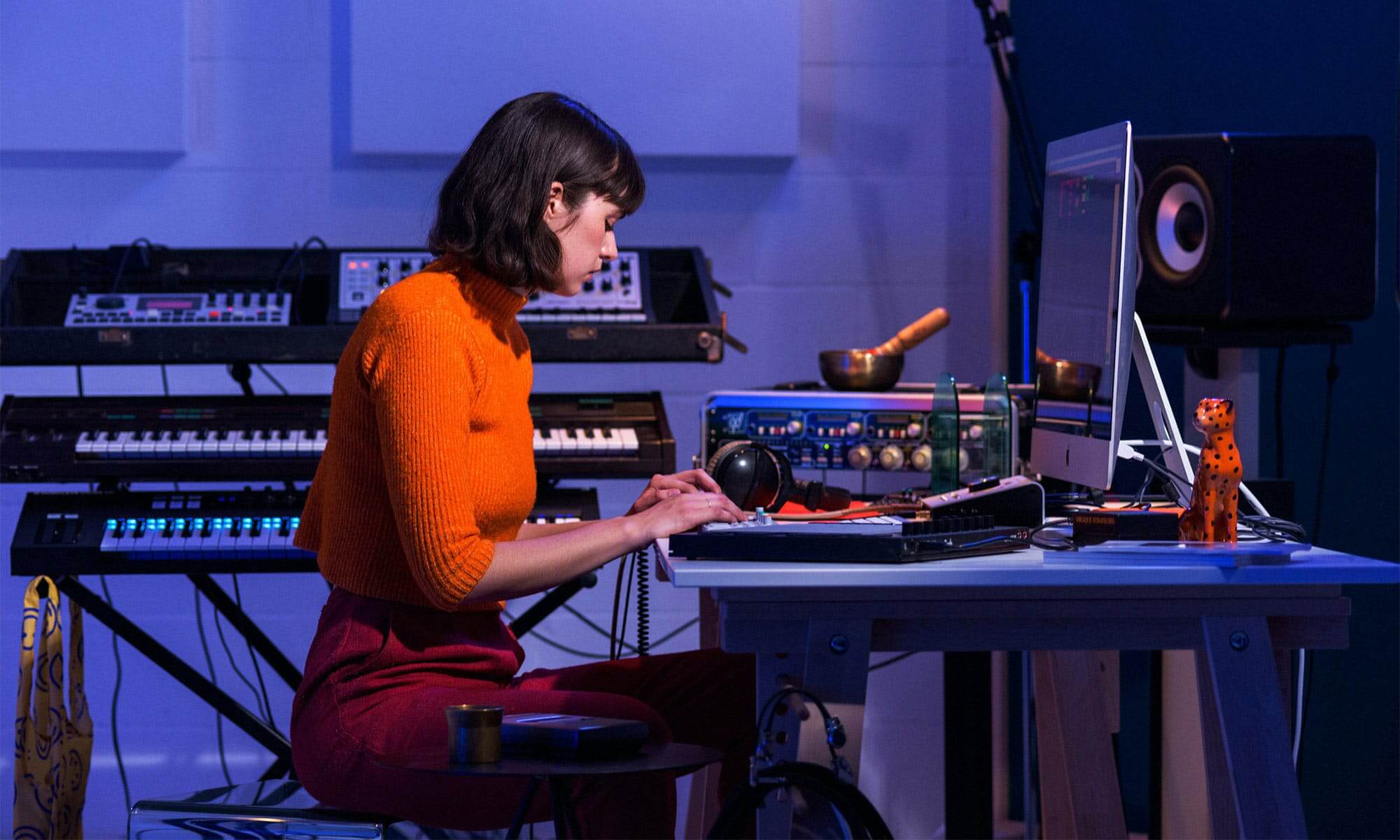Creating a great mix isn’t just about leveling, EQ, and compression. These tools are great to utilize before you think about mastering your music, however, they are not the best solution for fixing a boring mix. Make sure you consider what’s happening before you use these ones.
That is where arrangement comes into play. The term “arrangement” is usually used to explain the structure of the song and how the parts are organized over time.
While that’s technically part of the arrangement, we will show you the arrangement when it comes to the instrumentation, and how it all plays together to make up a big sounding track.
With that in mind, let’s check out 5 arrangement tips you could use to make your mixes more interesting.
Trick 1: use a spectrum analyzer
It’s always said that you need to use your ears, not your eyes if you want to make your mixes more interesting. And for the most part, that is a good idea!
However, honestly seeing spots in your music where your arrangement is lacking could help your ears hear the issue.
That is where a spectrum analyzer comes in. It will let you know the amplitude of the frequencies from 20hz to 20Khz, so you could honestly see what’s taking up the most space in your mix.
Put it on your master bus and take a peek once a while when you are writing. See which areas you may be neglecting.
For instance, in case you see a bunch of energy lacking in the top end, maybe it’s time to sprinkle in some more hi-hats.
When you see a big dip in your low mids, think about which low-end element is taking the sub frequencies, and add a low mid-bass instrument.
While this is not a foolproof solution to better arranging, it could certainly provide useful hints in making your track sound more full and punchy.
Trick 2: use top loops
I’ve noticed that lots of y producers look down on using loops. The truth is that when you utilize them creatively, you could achieve incredible things.
Top loops are particularly helpful. Typically they are sparkling hi-hat and percussion grooves that tilt towards the upper end of the frequency spectrum.
Sparsely adding top loops to your arrangement here and there could really add some shimmer and shine—particularly when you are lacking energy in the high end.
When you are able to place them in the right moments and are not overuse them, they will add that width depth you have been looking for.
Trick 3: sample the things around you
This one is a no brainer. Sample the things around you—inside and also outside. The magic behind this arrangement trick is that nobody else in this world will capture these samples the way you do.
It will make your music sound more original and organic.
This concept is taken to another level by Billie Eilish’s brother Finneas when he sampled things such as matches being struck, or noises from cars and airplanes.
These samples made Billie’s biggest singles extremely original and engaging.
What we want to do is take my field recorder and go for a walk. Maybe I will bring a mallet or drum stick with me. It’s a good way to get away from the pc if you find yourself in a beat block.
There are lots of objects in the real-life that have a timbre that can fill a hole in your arrangement.
Simply collect them, add them, and process them with effects. The possibilities are endless to make your mixes more interesting.
Trick 4: use ambience to fill out space
Have a sparse arrangement? Possibly your track consists solely of guitar, bass, vocals, and synth—and that is all you need.
If panning and automation are not cutting
it and you are still striving for width and depth, think about adding some ambiance underneath.
Including ambient loops such as city life, wind, ocean sounds, or vinyl sounds could actually make a track standout. Loop them under certain sections of your track to add a different feel.
Hot tip: Utilize a sidechain compressor on your ambient loops to make other parts of your track standout. Having some ocean sounds duck whenever your kick drum hits will certainly get the party began.
Trick 5: use creative effects on existing elements
This last one is not an obvious one, however, it’s a quick fix when you are in a pinch to make your mixes more interesting.
Take an element of your track, and duplicate it. Pan one hard left, and one hard right.
On your duplicated track, adding effects such as distortion, detuning, reverb, delay—anything to make it sound drastically different while maintaining the same musical info.
The timbre change between the 2 tracks is going to make an immediate impact on your track, particularly if these are the only two elements that are panned hard left and right.
It’s necessary to note that this arrangement trick will not work well on instruments that like to live in the middle. You might not want to pan your bass instruments or lead vocals, unless you are looking to get really experimental.
Interesting mixes need bold choices
There is no way around it, mixing is difficult.
Bold choices and small arrangement tips could go a long way. Don’t be afraid of having elements standout that normally wouldn’t.
Keep these tips in mind if you tend to approach your next arrangement!

